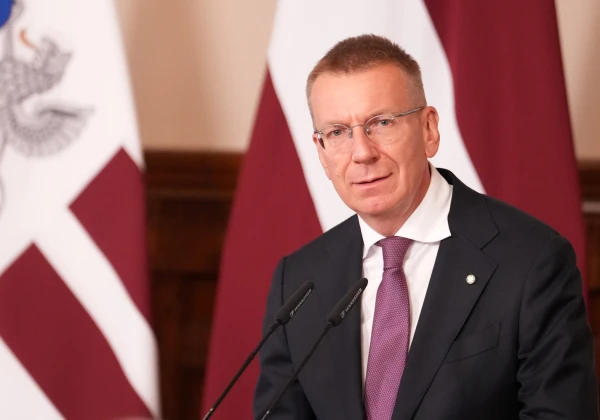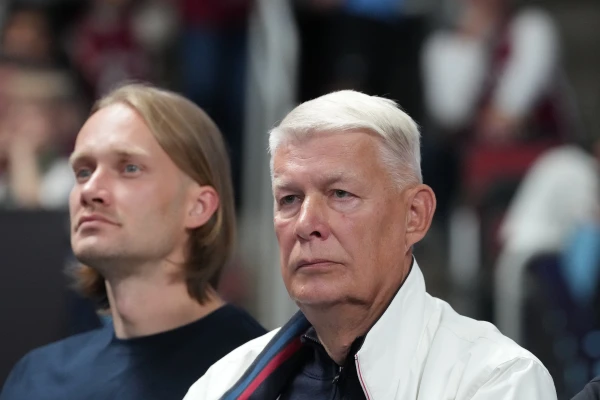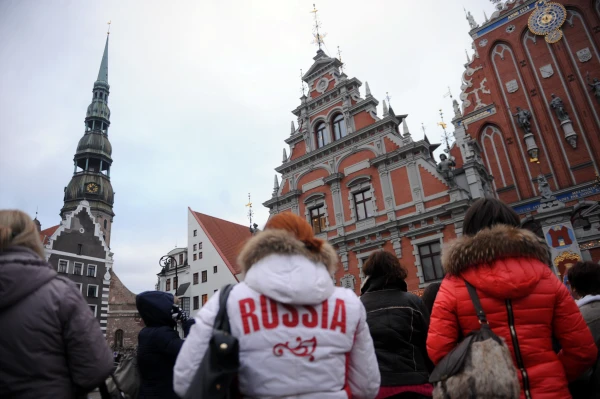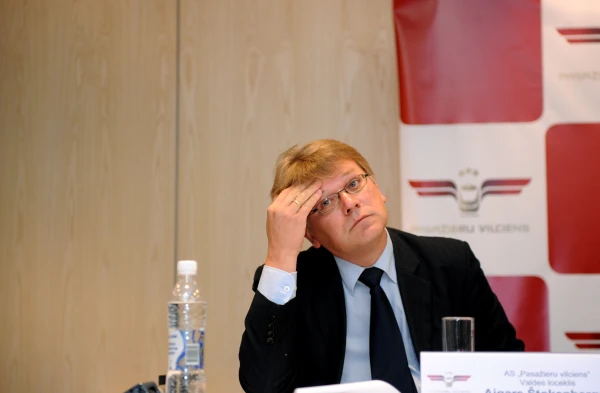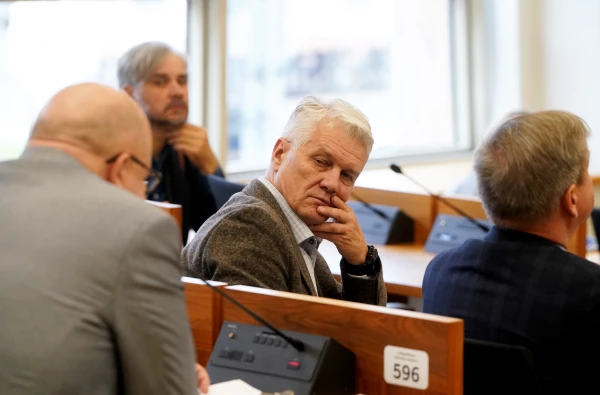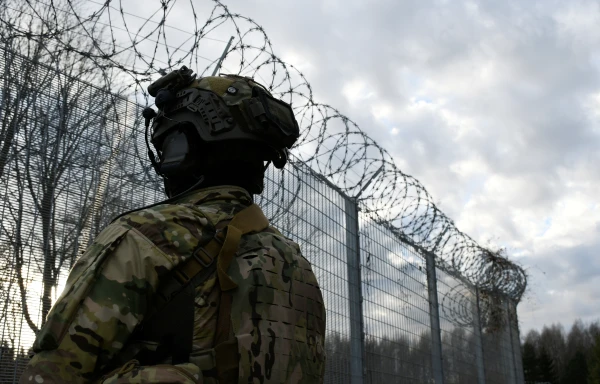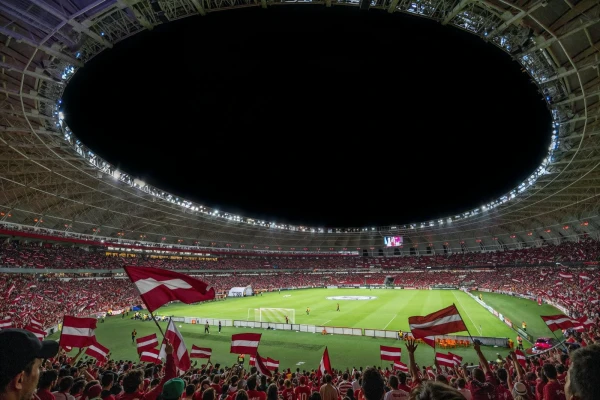
The Latvian government has taken on the project of a world-class football stadium – as evidenced by the information posted on the legal acts portal. As expected, we are in for a large-scale business process – with subsequent capitalization of profits and socialization of losses.
In Anticipation of the Latvian Pelé
A skeptic might say – is there even football in Latvia? A reasonable response from experts: it’s all because there’s nowhere to play. "Currently, only one stadium in Latvia corresponds to the highest UEFA category (Category 4) – 'Daugava' (natural grass, 10,461 seats). This green field is owned by the Latvian National Sports Center LLC (100% state-owned company).
In the 2024/2025 season, this stadium hosted UEFA Europa League matches in the football club tournament, as well as group stage matches of the qualifying competition for the 2025 European Championship for the national women's team of Latvia.
Assessing the current situation, the Latvian Football Federation concluded that although the national stadium 'Daugava' meets the minimum criteria set by UEFA for Category 4, it does not meet the modern infrastructure requirements compared to 'national' or 'main' state stadiums in other countries, which affects both the desire of spectators to attend competitions and deprives the possibility of claiming the organization of prestigious football events, as well as international attraction of performing artists, who mainly perform at stadiums."
Six Options
In a report prepared under the guidance of expert Edmunds Zveinieks from the Ministry of Education and Science, six alternatives are considered:
-
Renovation of the 'Daugava' stadium within the existing property;
-
Construction of a new stadium by the Latvian National Sports Center (LNSC) on state or municipal land;
-
Construction of a new stadium by LNSC in cooperation with the Riga municipality and the Latvian Football Federation;
-
Construction of a new stadium by a commercial entity in exchange for land;
-
Construction of a new stadium by LNSC as part of a public-private partnership (PPP);
-
Construction of a new stadium on private land as part of a PPP – for example, acquiring the private 'Skonto' stadium and further developing it in cooperation with LNSC, the Riga municipality, and the Latvian Football Federation.
"It is estimated that football as a separate industry can generate an additional economic value of 37 million euros. This value, according to the Ministry of Education, multiplies within further economic circulation and generates additional revenues in gross domestic product amounting to 55 million euros."
For comparison, according to forecasts for 2025, everything related to football, including LFF, clubs, and others, will create about 9.23 million euros for the state budget.
What Will the CAFD Say
The Central Agency for Finance and Contracts (CAFD) – the main institution in Latvia under the Ministry of Finance, overseeing the spending of EU funds, which, it is assumed, will be attracted for yet another construction project of the century. According to CAFD methodology, the actual construction of the facility will take 3 years, while the entire cycle will take 25 years.
Over a quarter of a century, both legal and financial issues will be resolved: "After analyzing the initial potential costs and revenues, the working group concluded that none of the considered alternatives is commercially viable, and in this scenario, public partners (the state and the municipality) will likely have to fully or partially assume the demand risk, covering the funding shortfall for the private partner."
It is worth noting the mentioned working group for the stadium – it was created by the decision of Prime Minister Evika Silina on December 20, 2024.
Let's Have a 'Daugava' with 15,000 Seats
The most detailed project in the document is the expansion of the national stadium in the very place where the sports quarter appeared almost a century ago. Here’s what is proposed for the new 'Daugava':
-
100% seating coverage;
-
Stands on all sides of the field (fourth stand);
-
Infrastructure readiness to host large concerts (access for freight trucks, bus traffic, food service flows, parking, and other factors);
-
Fixed seating near the football field or seats convertible into a modular athletics field zone;
-
Modern business boxes, wider areas with commercialization potential;
-
A wide media complex, technological support;
-
Screens, Wi-Fi, sound systems, digital indicators;
-
Modern, widely accessible indoor facilities;
-
Modern solutions – solar panels, rainwater collection, energy-efficient lighting, waste sorting, paperless tickets, CO2 footprint compensation measures.
Alternative Locations
The Latvian Football Federation conducted a survey and identified 5 possible locations for the new stadium – Jugla, Lucavsala, Spilve, Rumbula, Ziepniekkalns. In any case, at least 10 hectares of land will be needed for construction. Additionally, the specification includes 2 training pitches for football players and 1 for goalkeepers, an administrative building for the football federation, and parking for 1,200 cars (700 underground and 500 above ground).
"In the study of alternatives, Lucavsala was recognized as the best option, which, according to Riga's urban development documents, is planned as a multifunctional area with mixed development and various recreational functions. Studies showed that the location of a sports and entertainment facility of international and regional significance in Lucavsala, 2.5 km from the center of Riga, would provide convenient connections and short distances to major transport hubs in Riga (Riga International Airport, Riga Central Railway Station/Rail Baltica Station, Riga Bus Station, passenger ferry terminal), and significantly reduce the need for access to the facility by car (and the need for parking), as such distance allows event attendees (including local and foreign tourists) to reach it on foot or by micro-mobility tools.
At the same time, the location in Lucavsala – the central part of the city will balance transportation flows from both the city center and the wider surroundings, thus reducing the risk of traffic jams in the city on event days.
Moreover, the stadium could become a new unique brand of Riga's landscape, just like the Latvian National Library or the TV tower in Zakusala, as the parking area near the Daugava and Island bridges is considered a very important location in terms of landscape."
Indeed, are we worse than Albania? After all, in Tirana, where President Rinkēvičs flew last week, they opened the Air Albania arena with 22,000 seats just 6 years ago.
So, with a favorable decision, the new stadium could appear by 2030. And it will cost – over 67 million, of which 4.4 million is for design. Although these are just forecasts…



